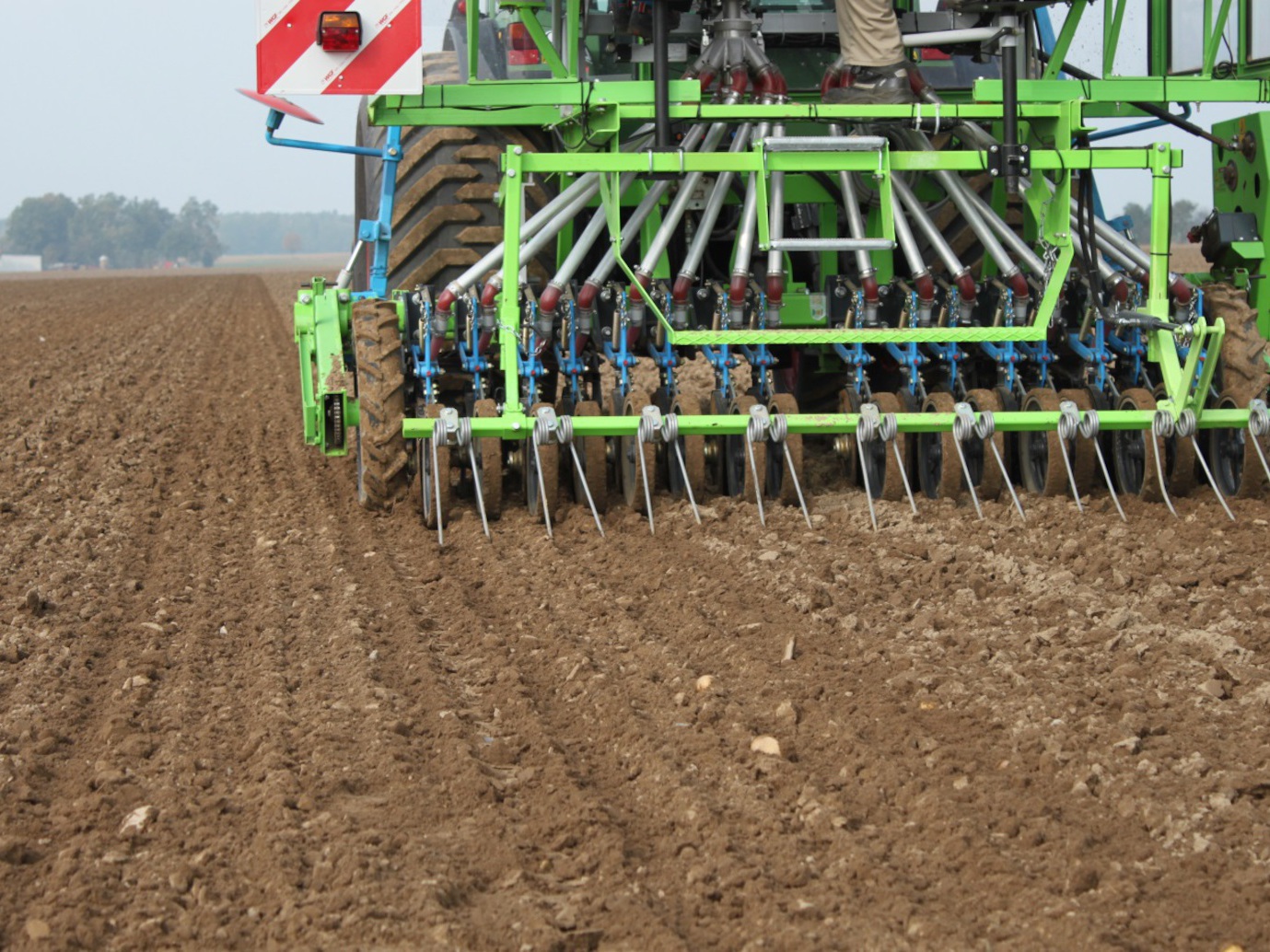Sowing hybrid rye - Information about seed rates, seed dates and soil preparation
Rye grain is used both for food and as a renewable raw material. Since the 1980s, hybrid rye varieties have become more popular because they have better disease resistance and higher yields compared to conventional rye. KWS has compiled the most important information about sowing hybrid rye for you.
What is the right seed rate for hybrid rye?
Hybrid rye suits drilling from early to mid-September and has the potential to help spread autumn planting workloads.
KWS recommends a seed rate of 175-200 seeds/m2 for September drilling, increasing to 220-260 seeds/m2 into October.
A lower seed rate of 175 seeds/m2 is recommend for end of August planting.
A standard seed rate of 200 seeds/m2 will result in a target population of 180 plants / m2 from a mid-September planting date.
Hybrid rye is supplied in 12M units. Adequate for a set crop area – depending on the desired seed rate.
Typical TGW (thousand grain weight) ranges from 28 – 40 grams.
Hybrid rye sowing recommendation per 12M unit
| Hectares | Seed rate |
|---|---|
| 6.0ha | 200 seeds/m² |
| 5.5ha | 220 seeds/m² |
| 5.0ha | 240 seeds/m² |
Login to myKWS to gain access to the hybrid rye seed rate calculator for more information and find the right sowing rate for the cultivation of hybrid rye on your land.
What is the right sowing time for hybrid rye?
Depending on the location, the ideal sowing date is between the end of August and mid-October. The optimum period for sowing ranges between 5th to 25th of September.
Recommended hybrid rye seed rates per month
| Month | Seed rate |
|---|---|
| September | 175-200 seeds/m² |
| October | 220-260 seeds/m² |
| November | 300+ seeds/m² |
In principle, farmers should include their experience at the site in finding the right seeding time. External conditions ultimately influence the exact date for seeding.
What is the best drilling depth for hybrid rye?
Hybrid rye is sensitive to excessive planting depth. KWS recommends a 2cm-3cm drilling depth. Yield is suppressed at depths deeper than 4cm.
Ensure optimum drilling depth is checked when sowing.
What are the climate considerations of hybrid rye?
Due to its strong root system, rye grows well in drought prone locations, and is one of the most resistant and robust cereal species.
Rye can germinate in low temperatures (1-2 °C) and growth begins at temperatures of 1-3 °C. This allows rye to continue its growth even in very cold phases of winter and to regenerate quickly in the spring. It has the highest frost tolerance of all cereals and survives frosts up to - 25 °C.
Rye is suitable for low rainfall areas (ie less than 650mm / year), but can be very successfully grown in higher rainfall areas, due to its low susceptibility to Septoria.
Rye will thrive on light and sandy soils, but will lose tillering capacity in heavy or clay based soils, where slug damage can occur.
What is the optimum establishment approach for hybrid rye?
Rye is particularly sensitive to un-even or poorly aerated seedbeds. The primary shoot (coleoptile) must break the soil surface from a shallow depth. Soil tillage should be carried out in as dry soil conditions as possible. If the seedbed is prepared when the soil is too moist, the seed is deposited irregularly and above all, too deep.
Rye benefits particularly from even seedbeds that have been ploughed and pressed. This is particularly important in second rye crops, to reduce ergot contamination risk to a minimum.







